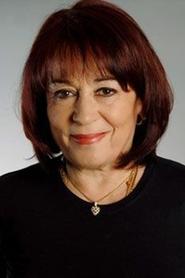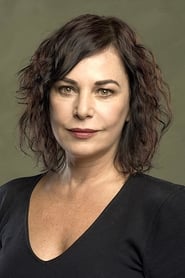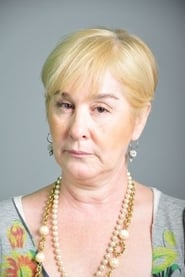
Ask Your Own Question
What is the plot?
"The European Side" begins with the introduction of the main character, a young man named Engin, who is navigating life in Istanbul. He is portrayed as a charming yet somewhat aimless individual, working at a small café on the European side of the city. Engin's life takes a turn when he meets a beautiful and ambitious woman named Zeynep, who is determined to make a name for herself in the world of fashion. Their initial encounter is filled with flirtation, and it becomes clear that there is an instant attraction between them.
As Engin and Zeynep begin to spend more time together, their relationship deepens. Engin is captivated by Zeynep's drive and passion, which contrasts with his own more laid-back approach to life. Zeynep, on the other hand, finds Engin's charm and carefree attitude refreshing. However, their budding romance is complicated by Zeynep's demanding career, which often requires her to prioritize work over personal relationships. This creates tension between them, as Engin struggles with feelings of inadequacy and jealousy.
Meanwhile, Engin's best friend, a quirky and loyal character named Ozan, provides comic relief and support throughout the series. Ozan is often seen trying to encourage Engin to pursue his dreams and take risks, but he also has his own romantic entanglements that add layers to the story. Ozan's relationship with a local artist named Elif becomes a subplot that intertwines with Engin and Zeynep's journey, showcasing the complexities of love and friendship.
As the series progresses, Zeynep faces significant challenges in her career, including a rival designer who tries to undermine her work. This rivalry escalates, leading to a dramatic confrontation at a fashion show where Zeynep's collection is showcased. Engin, who has been supportive throughout, finds himself caught in the middle of the chaos, trying to help Zeynep while also dealing with his own insecurities about their relationship.
In a pivotal moment, Zeynep is offered a once-in-a-lifetime opportunity to work abroad, which forces her to make a difficult decision. She grapples with the idea of leaving Engin behind to pursue her dreams, and this creates a rift between them. Engin feels abandoned and questions whether he should fight for their relationship or let her go. The emotional turmoil is palpable as both characters reflect on their feelings and what they truly want from life.
The climax of the series occurs when Zeynep decides to take the job abroad, leading to a heart-wrenching farewell between her and Engin. They share a passionate moment, filled with both love and sadness, as they acknowledge the impact they have had on each other's lives. Engin, feeling lost without Zeynep, begins to reevaluate his own aspirations and what it means to truly support someone you love.
In the final episodes, Engin embarks on a journey of self-discovery, inspired by Zeynep's courage to chase her dreams. He starts to pursue his own passions, exploring new opportunities and reconnecting with his artistic side. Ozan and Elif's relationship also evolves, providing a parallel narrative of growth and commitment.
The series concludes with a bittersweet tone as Zeynep returns to Istanbul for a visit. The reunion is filled with unresolved feelings, and both characters must confront the changes they have undergone during their time apart. The final scene leaves viewers with a sense of hope, as Engin and Zeynep share a moment of understanding, hinting at the possibility of a future together, but also acknowledging the paths they have chosen.
What is the ending?
The ending of "The European Side" sees the characters facing the consequences of their choices, leading to a resolution of their intertwined lives. The series concludes with a sense of closure for many, while leaving some threads open for interpretation.
In the final episodes, the narrative unfolds with a series of poignant moments that encapsulate the characters' journeys.
Scene 1: The atmosphere is heavy with anticipation as the characters gather for a final confrontation. The setting is a familiar café, a place that has witnessed many of their interactions. The camera pans across the faces of the main characters--each one reflecting a mix of hope, regret, and determination. The air is thick with unspoken words as they prepare to address the unresolved tensions that have built up over the series.
Scene 2: As the characters sit down, the conversation begins to flow, revealing their inner struggles. One character, burdened by guilt, finally admits to past mistakes that have affected their relationships. The emotional weight of this confession hangs in the air, prompting others to share their own vulnerabilities. The dialogue is raw and honest, showcasing the depth of their connections and the pain of their shared history.
Scene 3: The focus shifts to a pivotal character who has been on a journey of self-discovery throughout the series. In this moment, they express a newfound clarity about their desires and aspirations. The camera captures their determination, highlighting the transformation they have undergone. This character's decision to pursue a long-held dream serves as a catalyst for change among the group, inspiring others to reflect on their own paths.
Scene 4: As the conversation progresses, tensions rise again, leading to a heated argument. Old grievances resurface, and the characters confront each other with honesty. The scene is charged with emotion, showcasing the complexity of their relationships. However, amidst the conflict, there is a moment of understanding that begins to bridge the gaps between them.
Scene 5: The climax of the episode arrives when a character makes a bold choice that alters the course of their life. This decision is met with mixed reactions from the group, but ultimately, it serves as a turning point. The camera captures the moment of realization on the faces of the other characters, as they begin to see the potential for growth and healing.
Scene 6: In the aftermath of the confrontation, the characters begin to reconcile. They share heartfelt apologies and affirmations of support, solidifying their bonds. The café, once a backdrop for conflict, transforms into a symbol of unity and hope. The scene is filled with warmth as laughter and tears intermingle, showcasing the power of forgiveness.
Scene 7: The series concludes with a montage of the characters moving forward in their lives. Each one is shown taking steps toward their individual goals, reflecting the growth they have experienced. The final shots capture them in various settings--some pursuing careers, others nurturing relationships, and a few embarking on new adventures. The camera lingers on their smiles, hinting at the promise of a brighter future.
In the end, the fates of the main characters are intertwined with their choices. Some find love and fulfillment, while others continue to grapple with their pasts. The series closes on a note of optimism, suggesting that while the journey may be fraught with challenges, the bonds formed through shared experiences can lead to healing and new beginnings.
Is there a post-credit scene?
The European Side, produced in 2004, does not feature a post-credit scene. The show concludes its episodes without any additional scenes after the credits roll. Each episode wraps up its storylines and character arcs within the main content, leaving no lingering moments or teasers for future developments in a post-credit format. The focus remains on the narrative and character interactions throughout the episodes, providing a complete experience without the need for additional scenes after the credits.
What are the main character's motivations throughout the series?
The main character, Kenan, is driven by his desire to find love and establish a successful career. His journey is marked by his struggles with relationships, particularly with his on-and-off girlfriend, and his aspirations to become a successful writer. Kenan's internal conflicts often stem from his insecurities and the pressure he feels from his family and friends.
How does the relationship between Kenan and his girlfriend evolve over the series?
Kenan's relationship with his girlfriend, who is often portrayed as both a source of inspiration and frustration, evolves through various ups and downs. Initially, they share a passionate connection, but misunderstandings and external pressures lead to frequent breakups. Each reunion is marked by a mix of hope and tension, reflecting their deep emotional bond and the challenges they face in balancing personal ambitions with their relationship.
What role does the setting of Istanbul play in the characters' lives?
Istanbul serves as a vibrant backdrop that influences the characters' experiences and interactions. The city's rich culture and bustling streets mirror the characters' chaotic lives, providing both inspiration and obstacles. Key locations, such as cafes and parks, become significant meeting points for the characters, where pivotal moments of connection and conflict unfold, highlighting the city's impact on their personal journeys.
How do the supporting characters influence Kenan's journey?
Supporting characters, such as Kenan's best friend and his family members, play crucial roles in shaping his decisions and emotional state. His best friend often provides comic relief but also serves as a voice of reason, pushing Kenan to confront his fears. Family dynamics, particularly with his parents, add layers of pressure and expectation, forcing Kenan to navigate his ambitions while seeking their approval.
What are some key turning points in Kenan's character development?
Key turning points in Kenan's character development include moments of self-discovery, such as when he faces rejection in his writing career, prompting him to reassess his priorities. Another significant moment occurs during a confrontation with his girlfriend, where he realizes the importance of communication and vulnerability in relationships. These experiences lead to growth, as Kenan learns to balance his aspirations with his emotional needs.
Is this family friendly?
"The European Side," produced in 2004, is a Turkish television series that blends comedy and drama, focusing on the lives of various characters living in Istanbul. While the show is generally light-hearted and features humorous situations, there are some elements that may be considered objectionable or upsetting for children or sensitive viewers.
-
Mature Themes: The series touches on themes of love, betrayal, and family conflict, which may be complex for younger audiences to fully understand.
-
Romantic Relationships: There are various romantic entanglements that may include jealousy, heartbreak, and emotional turmoil, which could be distressing for sensitive viewers.
-
Conflict and Arguments: Characters often engage in heated discussions and arguments, which may depict familial or interpersonal strife that could be uncomfortable for children.
-
Social Issues: The show occasionally addresses social issues such as class differences and economic struggles, which might be heavy topics for younger viewers.
-
Mild Language: There may be instances of mild profanity or suggestive language that could be inappropriate for children.
-
Emotional Moments: Scenes depicting sadness, loss, or disappointment can evoke strong emotions and may be upsetting for sensitive individuals.
Overall, while "The European Side" is not overtly graphic or violent, its exploration of adult themes and emotional complexities may not be suitable for all children or sensitive viewers.































